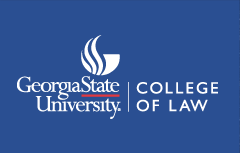Document Type
Article
Abstract
This article addresses the way to safety in the context of forensic sciences evidence. After presenting the current lack of safety, which I term “unsafety,” I raise some possible safety measures to contend with this. My suggestions are grounded on two bases: first, the specific analysis of each type of evidence in line with the most recent research on the subject; and second, modern safety theory and its application to the criminal justice system. It is important to stress that my proposals represent only some of the conceivable safety measures. Developing a comprehensive safety theory for the criminal justice system will require considerable additional cross-disciplinary research work, which I recommend be undertaken within the framework of a Safety in the Criminal Justice System Institute (SCJSI).
I have chosen, for discussion purposes, to analyze the two central types of forensic sciences evidence currently predominating criminal law: DNA testing and fingerprint comparisons. For each of these, I will review the most up-to-date research on the topic. I will demonstrate why present use of these types of evidence is not error-free and fails to ensure safety from false convictions and then offer different ways of improving safety in these contexts.
I will propose a general solution regarding all types of forensic evidence, based on an earlier proposition I developed with Dr. Mordechai Halpert, namely, that the legislature must enact a rule that precludes the admissibility of forensic evidence in court unless it has been developed as a “safety-critical system.” The knowledge and solutions for developing safety-critical devices already exists in other engineering fields, such as medical devices and aviation devices. Thus, all that is needed is the willingness and reasonable resources to carry this out. Later in this article, I will offer some additional general solutions.
This article also addresses what is known as “junk science,” which refers to evidence that is presented, inaccurately and misleadingly, as scientific evidence when it has, at best, a flimsy connection to science. Despite studies clearly pointing out this lack of scientific grounding, including the 2009 National Academy of Sciences (NAS) Report, some courts still admit such evidence as scientific evidence. This is proof in itself of just how far the criminal justice system is from being a safe system.
Recommended Citation
Boaz Sangero,
Safety from Flawed Forensic Sciences Evidence,
34
Ga. St. U. L. Rev.
1129
(2018).
Available at:
https://readingroom.law.gsu.edu/gsulr/vol34/iss4/8
Included in
Administrative Law Commons, Comparative and Foreign Law Commons, Constitutional Law Commons, Courts Commons, Criminal Law Commons, Criminal Procedure Commons, Disaster Law Commons, Evidence Commons, International Law Commons, Law and Society Commons, Law Enforcement and Corrections Commons, Legal Ethics and Professional Responsibility Commons, Public Law and Legal Theory Commons, Science and Technology Law Commons
